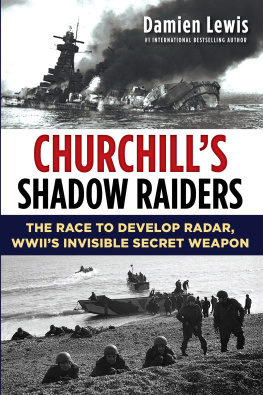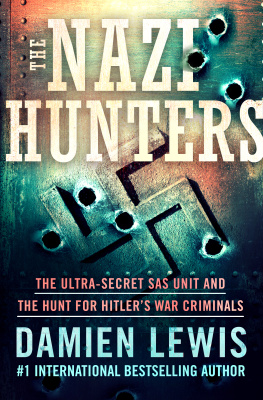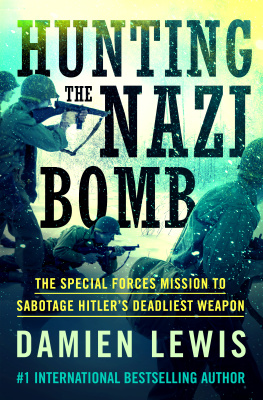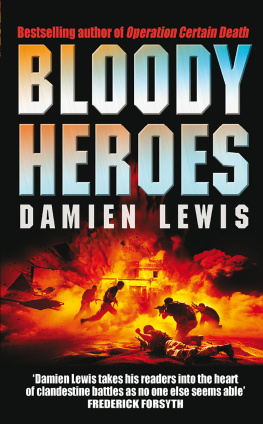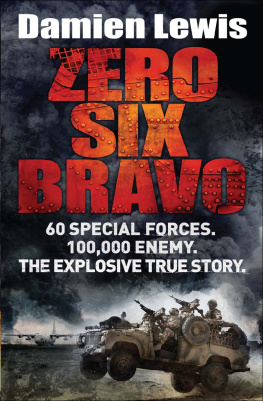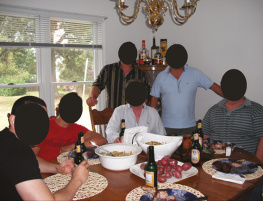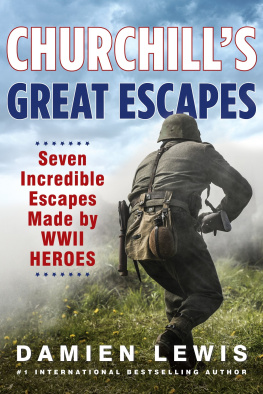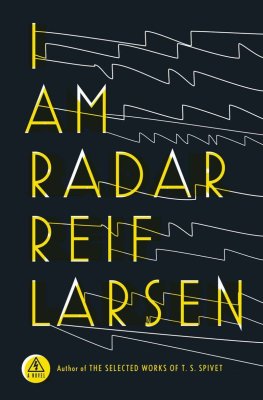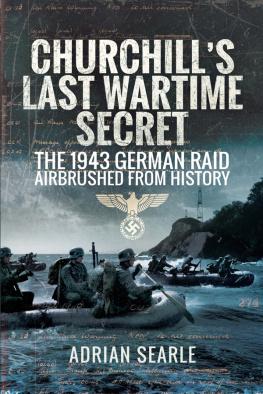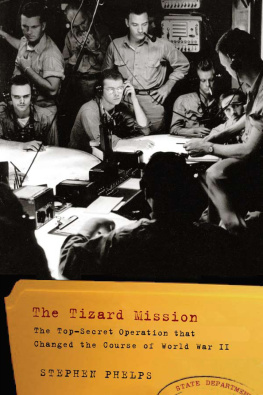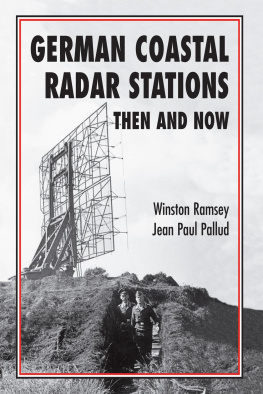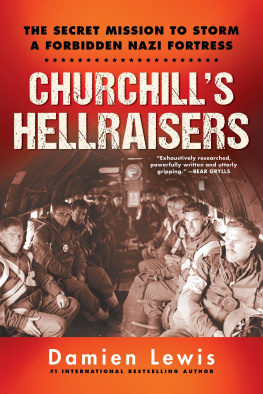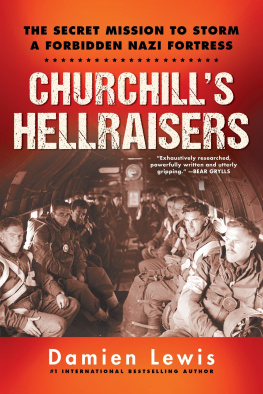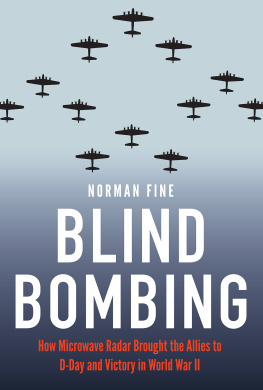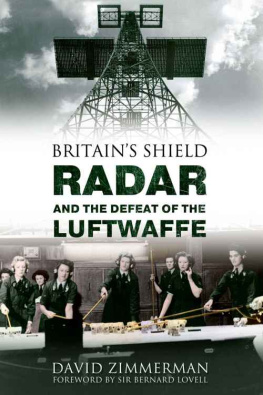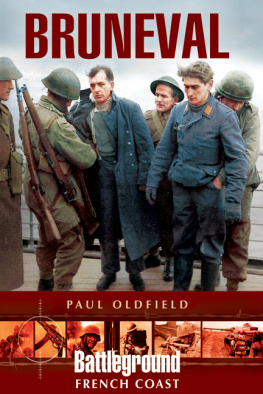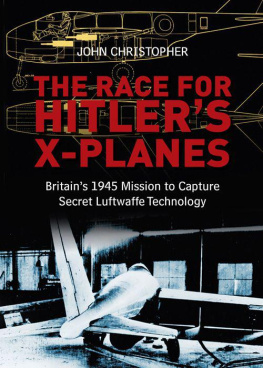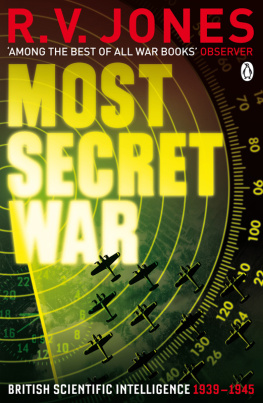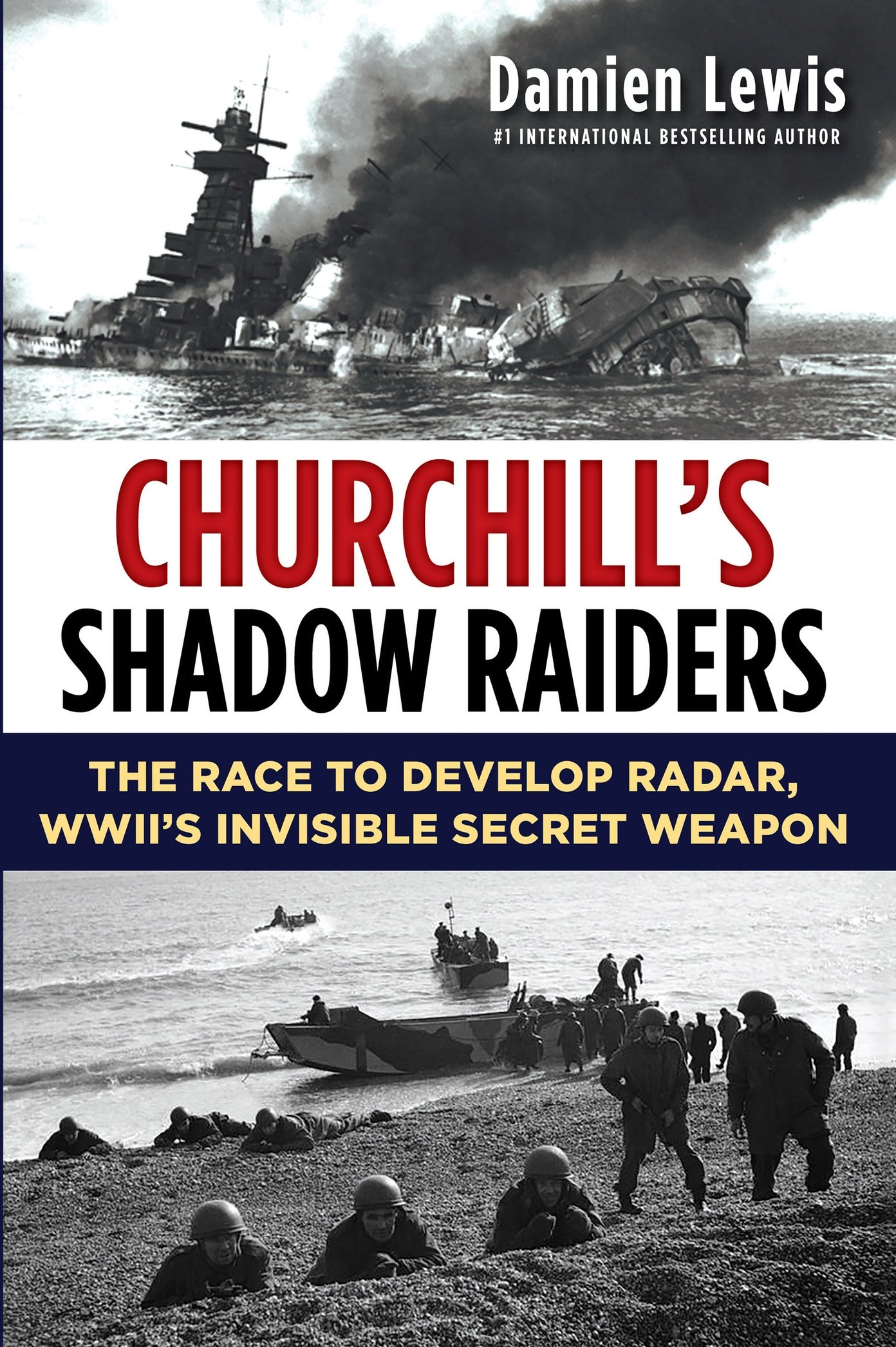Acknowledgements
In researching this book I was able to meet, speak to and receive assistance from many individuals who were exceptionally generous with their time. My special thanks and gratitude are extended to all, and my apologies to those that I may have inadvertently forgotten to mention.
Among others, Id like to thank those individuals depicted in these pages, and their family members, who helped me, with great generosity, to tell their stories. Many thanks to Jim Booth, Second World War veteran and COPP operator, for sharing your compelling reminiscences of proving the D-Day beaches. Thanks to Alan Smith, for sharing your memories and recollections of growing up in and around the radar towers and laboratories of TRE in Dorset. Thanks to Malcolm Buckley, for your recollections and the photos and documents regarding your father, Edwin William Buckley, and his service with Airborne Division in the Second World War. Thanks to Chris Rooney, for sharing your fathers wartime SAS recollections and memories, plus those images you generously provided to me. Thanks to John and Peter Jefferies, for allowing me to quote from the recollections of your father, David Cross Jefferies, of parachute jumps during the war. Especial thanks to Nicole Pickard, Wing Commander Charles Pickards granddaughter, for the correspondence and the kind permission to use photos of her grandfather in this book. Im very grateful to Mike Packwood, grandson of Lance-Corporal Robert Watson, for reaching out to me about the role he played in Operation Colossus, and for sharing recollections and memories, plus the photos used in this book.
My very special thanks are also extended to Jack Mann, veteran of the SBS, SAS and LRDG, for reading an early draft of this book and for your invaluable insights and recollections from the war years, plus the documents and photographs you were, once again, happy to share with me. These proved invaluable, as did your insight and perceptive comments.
Very special thanks to Dr Phil Judkins, Chairman of the UKs Defence Electronic History Society and of Purbeck Radar Museum Trust, for your guiding hand and excellent feedback at all stages of the research and writing process, which proved invaluable. Enormous thanks to Mike Burstow, and all at MRATHS, including and not limited to Hugh Williams, Martin Hutchinson, Ron Henry, Mike Dean, Lew and Sue Amphlett and Tony & Viv Waller. The tour of the MRATHS archive in Malvern, plus of Malvern and its historic places of interest relating to the Radar Wars, was illuminating and a real highlight. Thank you also to those from MRATHS who invited me into your homes and extended warm hospitality during my visit. The MRATHS charity is profiled in the closing pages herein. Id also like to thank QinetiQ Plc, who host the MRATHS archive, for granting me access to view and peruse it at my leisure, at their Malvern headquarters.
I extend my very heartfelt thanks to TRE veteran Laurie Hinton and his wife, Ann, for inviting me into your home so I could hear your story, which was hugely appreciated. Again, Im hugely grateful to John and Barbara Hooper, both of whom are TRE veterans from the Second World War, who shared with me your recollections of serving there during the war years. It was both a pleasure and an honour to listen to your stories. Im grateful also to Evelyn Warton, who served with the WRNS during the war and taught pilots to better see in the dark, among other things a story related at great length in her captivating memoir, Brave Faces, written under the pen name, Mary Arden. It was a privilege meeting you and listening to your stories. Both Eve, and her son Jamie Robertson, also assisted me greatly with relating the story of George Paterson, the man tasked to blow up the Tragino Aqueduct and a close friend of their family and godfather to one of Eves sons.
Im also immensely grateful to the late Max Arthur, a fellow author whose assistance proved invaluable. Thanks to fellow author and military historian Neil Thornton also, for invaluable help, guidance and contacts. My immense gratitude to Martin Sugarman, who proved enormously helpful in my research into Peter Nagels war years. Thanks also to Ian Virgo, whose local historical research on the Dorset radar connection and all things TRE proved invaluable. Immense gratitude also to Frank and Suzie Parr, whose support of the Artist Rifles Clubhouse, helping safeguard its venerable two-hundred-year history and unique archival record, has proven so invaluable.
Thanks especially to Ben Waddams, for your superb depiction of the scene from Operation Colossus, when the parachutists dropped into enemy territory on Britains first ever airborne operation. A wildlife artist by profession, Ben was first inspired to paint the exploits of elite forces during the Second World War, when listening to my writing on audio books in his artists studio. We have used Bens wonderful paintings, inspired by my work, to help raise thousands of pounds for charities connected to my writing, and his painting of Operation Colossus graces the rear cover of this book.
In no particular order I also wish to thank the following, who assisted in many ways: research, proofreading, subject matter expertise, contacts, referrals. Tean Roberts, for your hard work and diligence, as always. Simon Fowler, for your expertise and inspiration, gleaned from the various archives. Paul and Anne Sherratt, for your incisive comments and guidance. Thanks especially to my good friend (and sensei) Sally Allcard for translations from the French and the German, which proved invaluable.
Thanks in particular to Nick Caplin, Renata Gomes and Catherine Goodier, at Blind Veterans UK, for all your help and assistance. Id like to thank John Jones, of Hunters Gin, a foremost supporter of Blind Veterans UK (BVUK), a wonderful veterans charity whose archive proved instructive in the writing of this book (a charity profiled in the closing pages herein). Id like to thank Bob and Jackie Skillicorn of The Bookshop Liskeard, for your inspired and enthusiastic support of authors and the book trade, and for your hosting the Cornwall launch of this book, a generous and much-appreciated gesture.
Thanks to Phil Williams, for research into historical aspects of this story. Thanks also to Asher Pirt, Dennis Worden, Christina and Ken Penman, Paul Hazzard, Rupert Paul Utley and Jeff Allum, for the various ways in which you helped enable this book to come to fruition.
The staff at several archives and museums also deserve special mention, including those at the British National Archives; the Imperial War Museum; the Churchill Archive Centre at Churchill College, Cambridge; and MRATHS. Some files from the National Archives were made available to me as a result of Freedom of Information requests, and I am grateful to the individuals at the Archives who made the decision that those files should be opened. Im also grateful to the Army Personnel Centre, Support Division, Historical Disclosures, for making the military records of Major John Dutton Frost available to me.
My gratitude also to my literary agent, Gordon Wise, of Curtis Brown, for helping bring this project to fruition, and to all at my publishers, Quercus, for same, including, but not limited to: Charlotte Fry, Ben Brock and Fiona Murphy. My editor, Richard Milner, deserves very special mention, as always. Many thanks also to Wendy McCurdy, at my American publisher, Kensington, and to all of her team, and to George Lucas, the agent who represented this book in the USA.
I am also indebted to those authors who have previously written about some of the topics dealt with in this book and whose work has helped inform my writing. I have included a full bibliography, but in alphabetical order the key texts are: The Radar Army, Reg Batt; The Rise of the Boffins, Ronald W Clark; Seven Assignments, Brigadier Dudley Clarke; Arrows of Fortune, Anthony Deane-Drummond; Return Ticket, Anthony Deane-Drummond; Night Raid, Taylor Downing; The Guinea-Pigs, Raymond Foxall; A Drop Too Many, Major General John Frost; Prelude to Glory, Maurice Newnham; The Bruneval Raid, George Millar; The Red Beret, Hilary St George Saunders.

